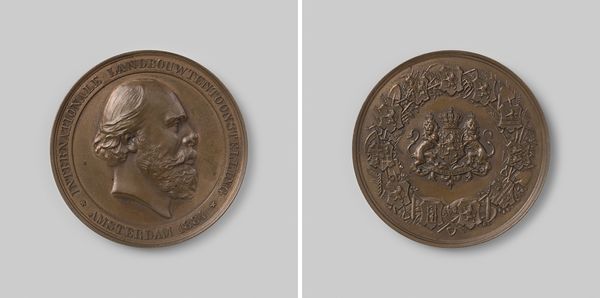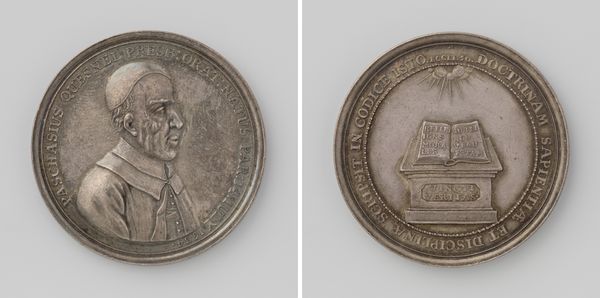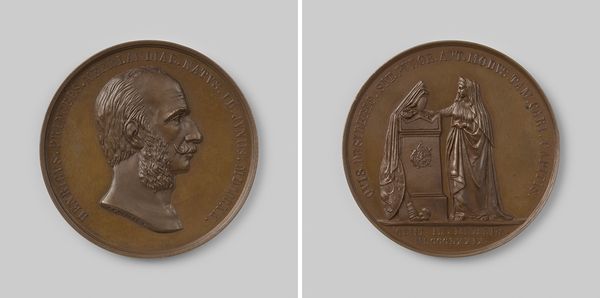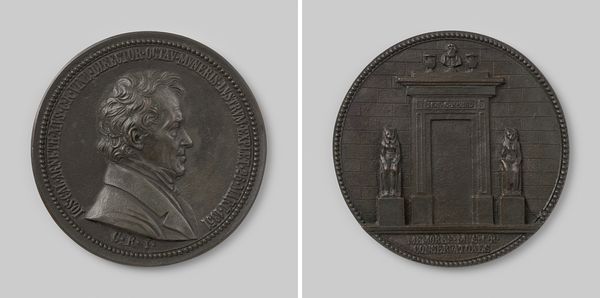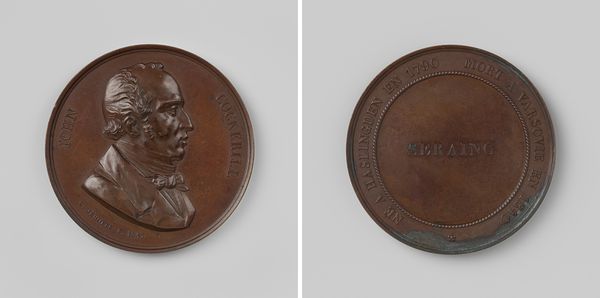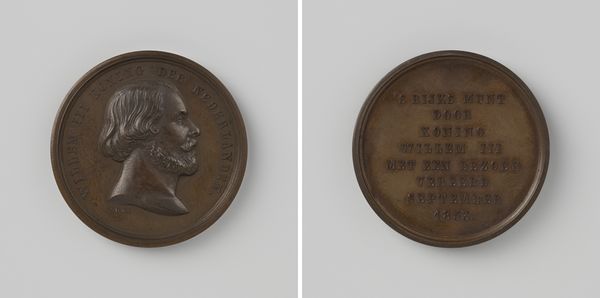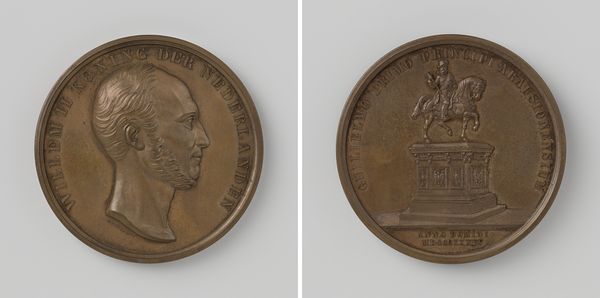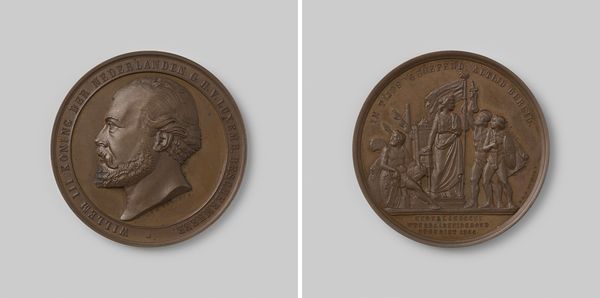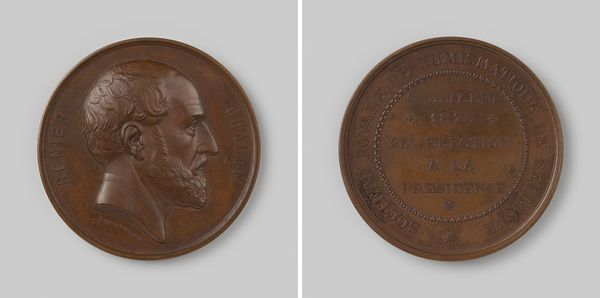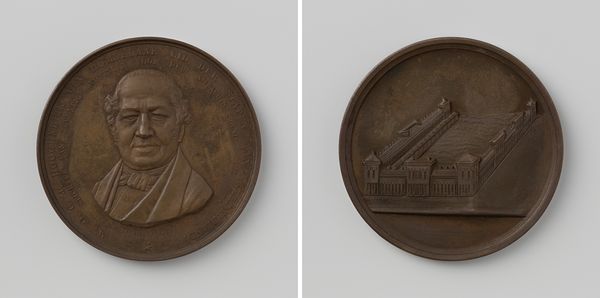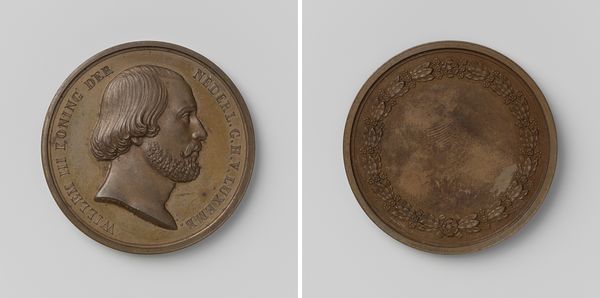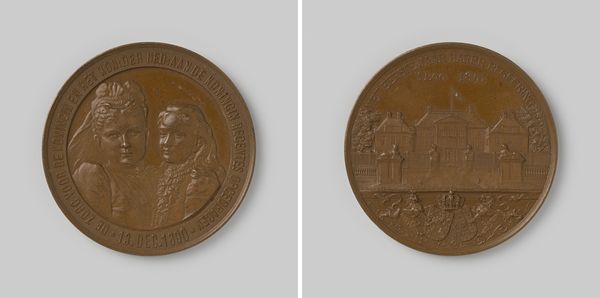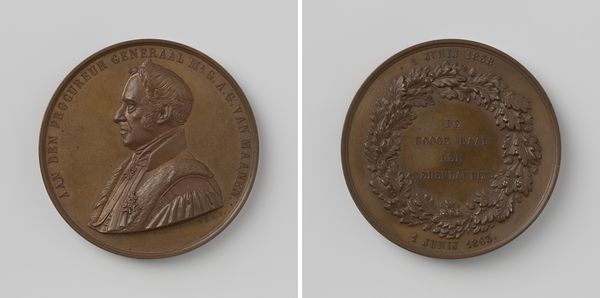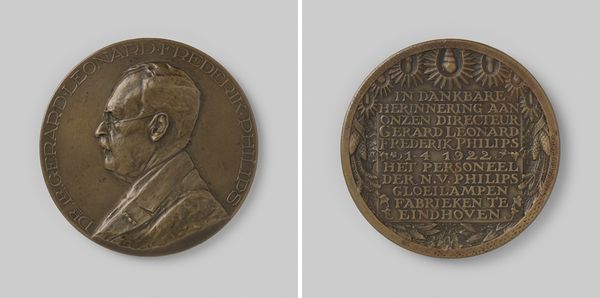
Portretpenning Andrew Carnegie ter gelegenheid van de opening van het Vredespaleis te 's-Gravenhage 1913 1913
0:00
0:00
metal, bronze, sculpture
#
portrait
#
metal
#
stone
#
sculpture
#
bronze
#
sculpture
#
history-painting
Dimensions: diameter 7.0 cm, weight 114.16 gr
Copyright: Rijks Museum: Open Domain
Editor: Here we have Toon Dupuis' bronze portrait medal of Andrew Carnegie, made in 1913. One side features Carnegie's profile, while the other shows the Peace Palace in The Hague. It’s quite striking; the detail for such a small object is really impressive. What's your interpretation of this work? Curator: This medal serves as a powerful artifact that links philanthropy, architecture, and international relations in the early 20th century. Consider Carnegie's vast wealth, accumulated during a period of intense industrial growth and social inequality. His funding of the Peace Palace must be seen within the context of wealth redistribution, class consciousness, and the rise of progressive movements. Does the commemorative nature of the piece, coinciding with the Palace's opening, complicate its message? Editor: In what way? Curator: Well, think about the Palace itself, intended as a space for international arbitration. However, its inauguration preceded World War I, revealing the limitations of diplomacy in preventing conflict. Doesn't the medal, therefore, stand as a somewhat ambivalent symbol – a testament to the desire for peace juxtaposed against the backdrop of impending global war? Moreover, consider the visual representation: Carnegie, a man of industry, juxtaposed with the architecture of peace. Editor: So, you’re saying it presents a complex narrative, not just a celebration of philanthropy. The medal forces us to confront these contradictions – the intent versus the historical reality. Curator: Precisely. It encapsulates a moment where hopes for a more equitable and peaceful world were tangible, yet undermined by systemic forces and structural oppression. It acts as a critical lens through which we can examine the dynamics of power and the complexities inherent in philanthropic endeavors. What do you make of that relationship now? Editor: That’s really given me a fresh perspective. I hadn't considered the social and political context surrounding its creation in such depth. It highlights how art can simultaneously celebrate ideals while exposing uncomfortable truths. Curator: Indeed. And remember to carry that critical lens as you engage with other artworks and cultural objects.
Comments
No comments
Be the first to comment and join the conversation on the ultimate creative platform.
